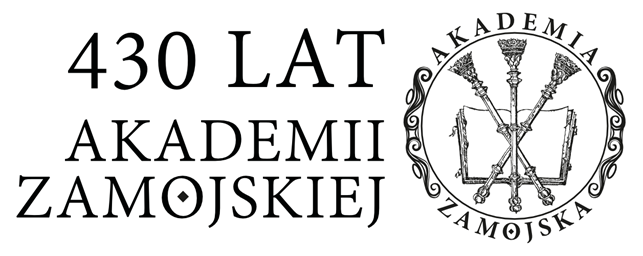Materials on Disappearing Jobs in the Interwar Period (1918-1939) on the Basis of Entries in the Records of the Cathedral Parish in Zamość
Agnieszka Szykuła-Żygawska
Abstract
In the interwar period Zamość became once again the central service, economic and administrative centre for the neighbouring poviats, recovering from the partitions and also from the period when it functioned as a military fortress and there were hardly any civilian activities, i. e. the 19th century. A characteristic feature of Zamość’s industry was the development of plants based on local raw materials, including the printing industry traditionally present in the town. The author observes this development through the prism of the jobs done by the inhabitants of Zamość at that time, established on the basis of the documents stored by the Roman Catholic Parish of St Thomas the Apostle in Zamość, such as marriage, birth and death certificates. She is particularly interested in jobs which are nowadays considered to be vanishing or non-existent, as they are the most valuable for the reconstruction of the town’s past. The author distinguishes the following categories of jobs: administration, services (including science and education, culture, and health care), transport and communication services, commerce, industry and crafts, special functions (order and defence), and freelance jobs. For example, in the administration she found the jobs of a telegraphist, stenographer, office worker, and bookkeeper; in the printing industry – the jobs of a typesetter, bookbinder, and printing engineer; in the crafts industry, developing mainly in Nowa Osada – the jobs of a shoemaker, boiler-maker, saddle and harness maker, beam maker, basket maker, stocking-maker, and bender. The author gives the names of people doing dozens of jobs.
Keywords:
interwar period, vanishing professions, craftsmen, printing industry in Zamość, Nowa Osada in ZamośćMost read articles by the same author(s)
- Agnieszka Szykuła-Żygawska, Koloniści niemieccy w Zamościu w świetle ksiąg metrykalnych zamojskiej katedry i inwentarzy notarialnych , The Archivist of Zamość: Vol. 16 (2018)
- Agnieszka Szykuła-Żygawska, Bogumiła Sawa: A Historian and Expert on the History of the Zamoyski Family Entail. Talking About Books , The Archivist of Zamość: Vol. 18 (2020)
- Agnieszka Szykuła-Żygawska , Nieznane materiały do biografii architekta Jakuba Hempla , The Archivist of Zamość: Vol. 12 (2013)
- Agnieszka Szykuła-Żygawska, Środowisko artystyczne Zamościa w 2. połowie XVII wieku. Twórcy w życiu miasta , The Archivist of Zamość: Vol. 14 (2015)
- Agnieszka Szykuła-Żygawska, Ratujmy kolegiatę. Konserwacja świątyni w Zamościu w pierwszych latach po zakończeniu II wojny światowej , The Archivist of Zamość: Vol. 17 (2019)
- Agnieszka Szykuła-Żygawska , Nowe materiały do biografii malarzy, sztycharzy, geometrów i architektów w Zamościu w XVIII wieku , The Archivist of Zamość: Vol. 13 (2014)
- Agnieszka Szykuła-Żygawska , Andrzej Kędziora, Nieznany rękopis o Namysłowskich, Karolu Namysłowskim i Orkiestrze Włościańskiej , The Archivist of Zamość: Vol. 14 (2015)
- Agnieszka Szykuła-Żygawska , Poradnik proboszcza unickiego z końca XVIII w. , The Archivist of Zamość: Vol. 9 (2010)
- Agnieszka Szykuła-Żygawska, Nieznany list Wojciecha Kołaczkowskiego (Zamość 2 IX 1920) , The Archivist of Zamość: Vol. 10 (2011)
- Agnieszka Szykuła-Żygawska, Rekwizyty – oznaki patriotyzmu w XIX-wiecznych inwentarzach majątkowych Archiwum Państwowego w Zamościu , The Archivist of Zamość: Vol. 12 (2013)
Details
References
Statistics
Authors
Citation rules
Altmetric indicators
Licence

This work is licensed under a Creative Commons Attribution-NoDerivatives 4.0 International License.


 Język Polski
Język Polski
 English
English





